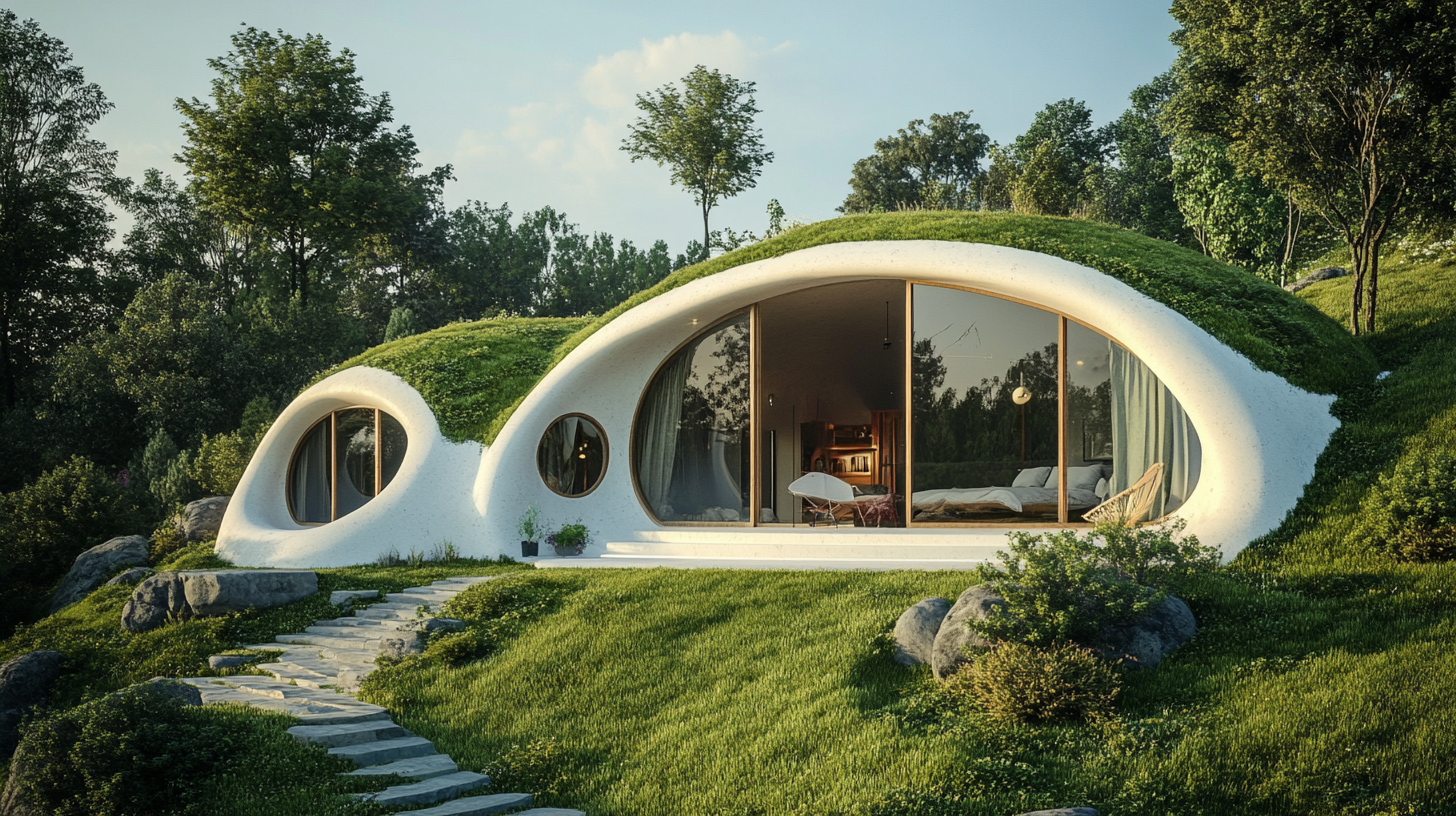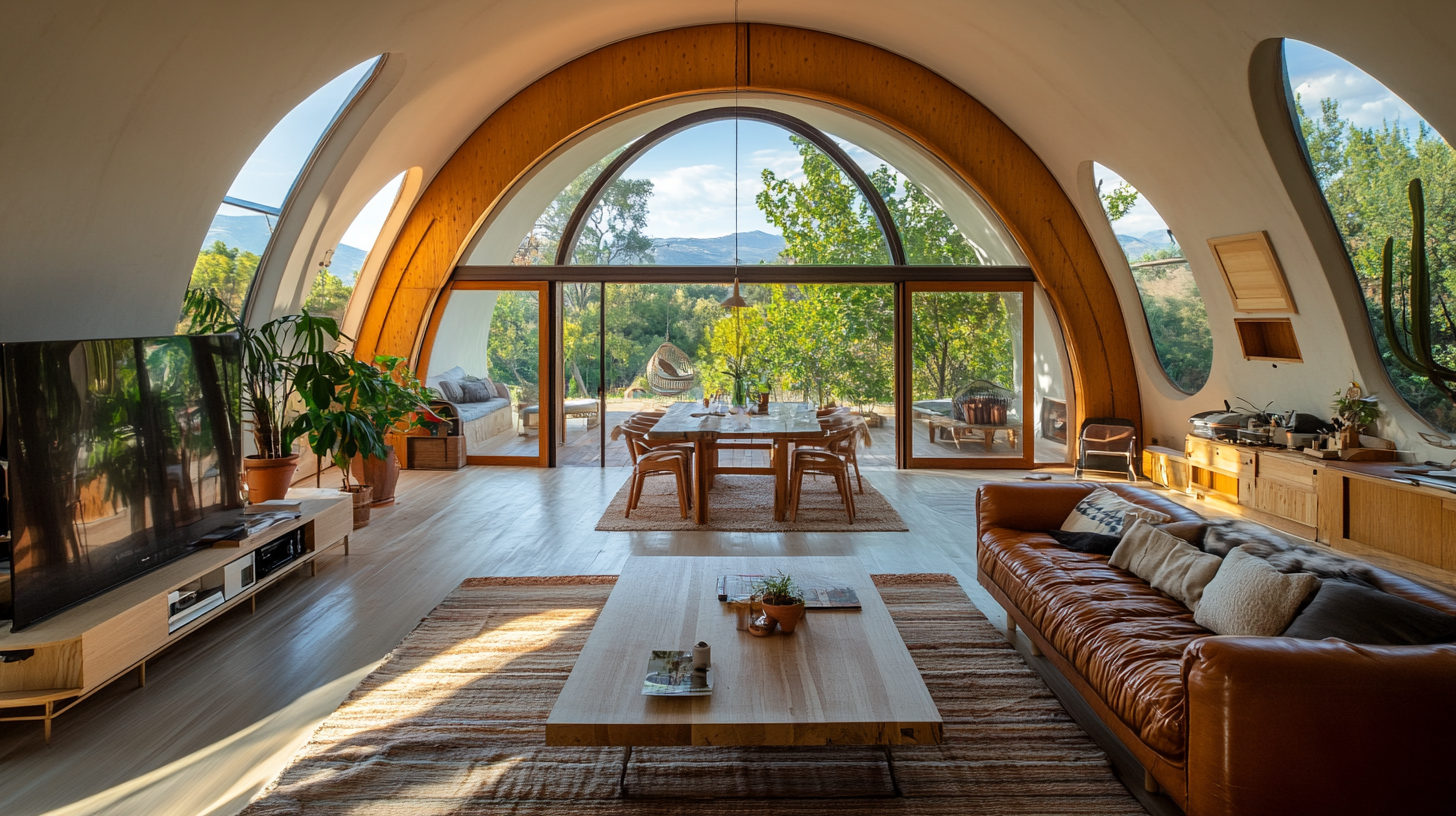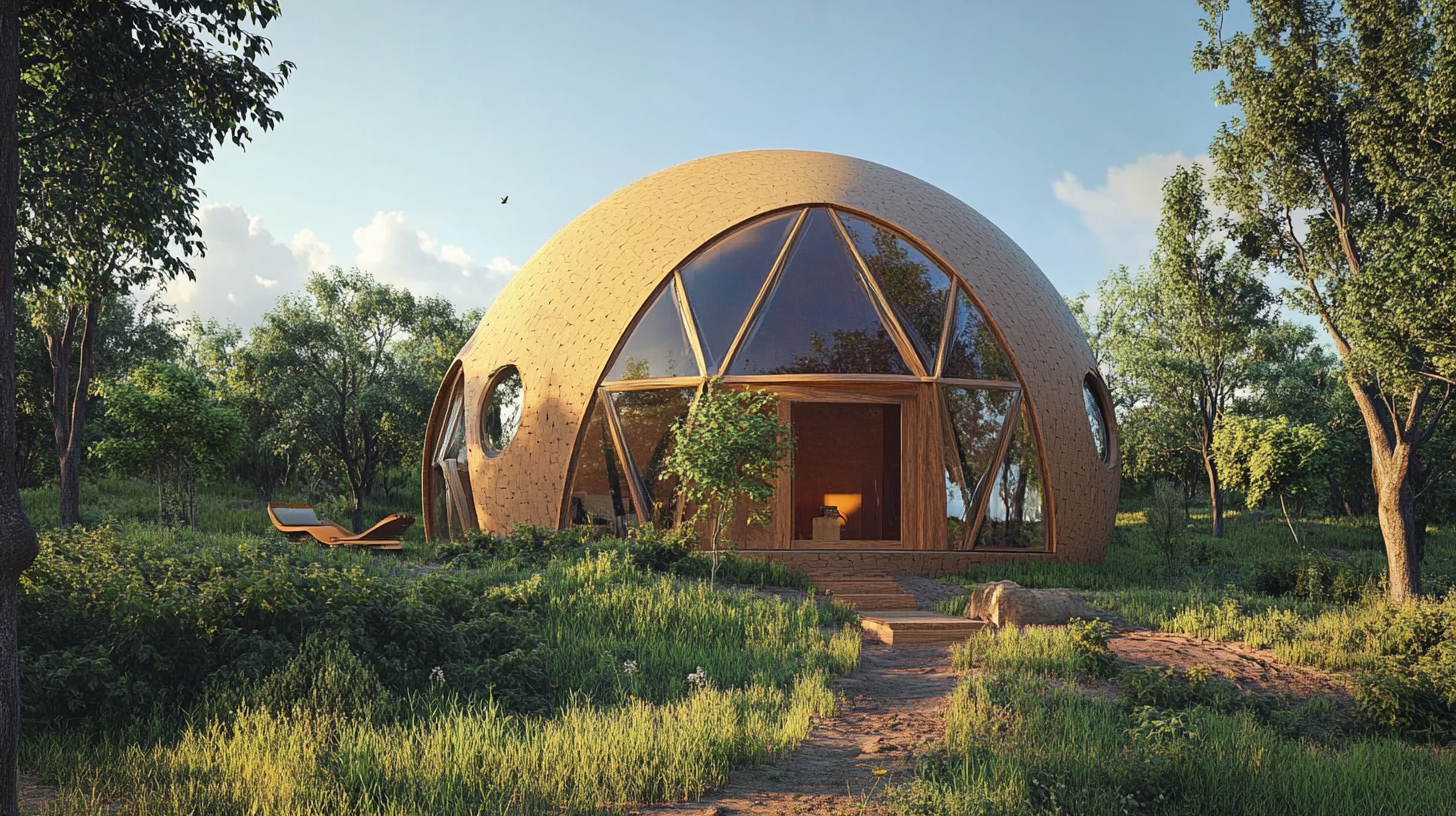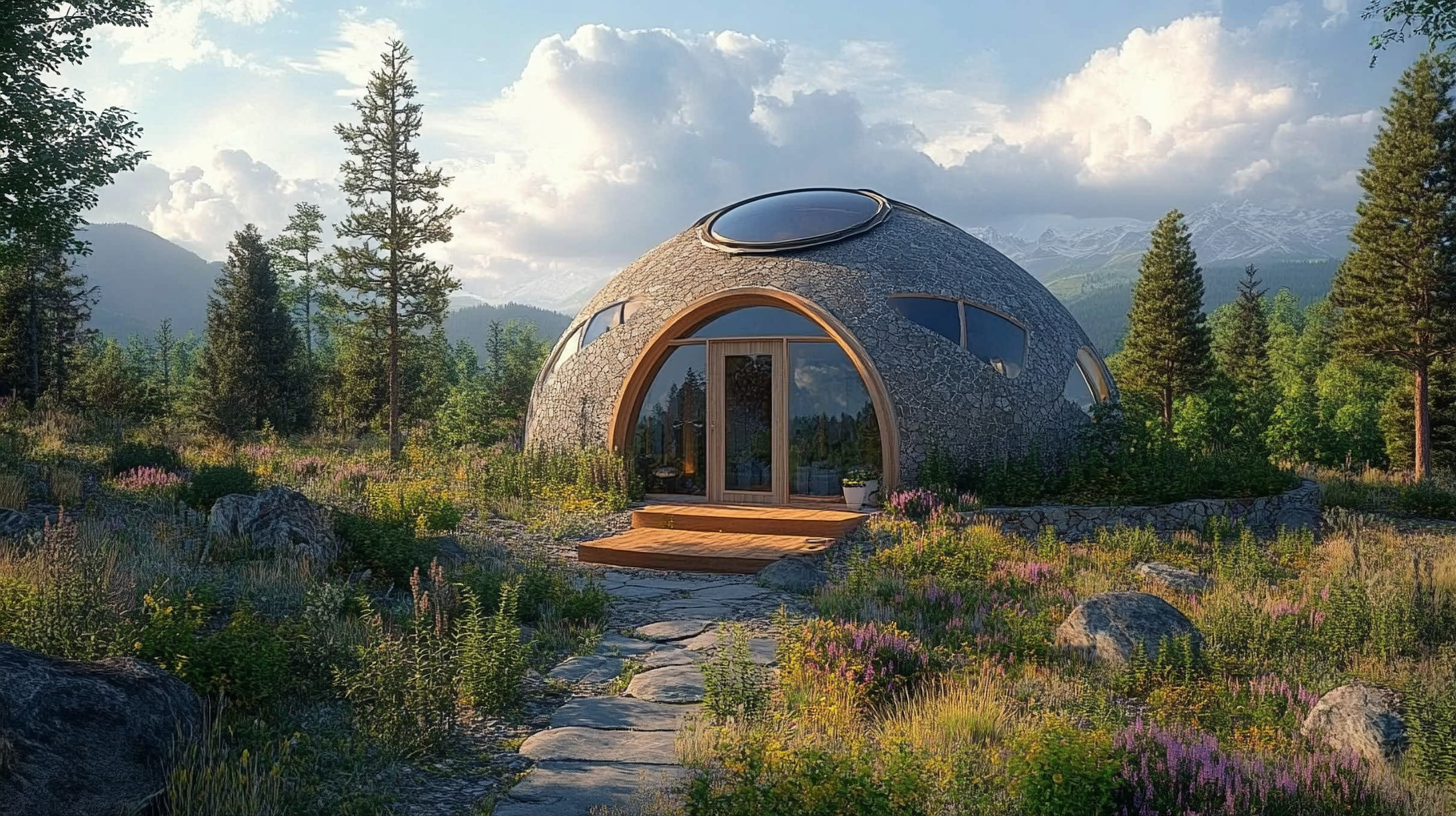
News
How to Source the Perfect Dome House for Sustainable Living Solutions
In recent years, the quest for sustainable living solutions has gained unprecedented momentum, highlighting the need for innovative architectural designs that harmonize with nature. At the forefront of this movement is the Dome House, an avant-garde structure that captures the essence of eco-friendly living. With its geodesic design, efficient energy use, and minimal environmental footprint, the Dome House offers a compelling alternative to traditional homes, making it a popular choice among eco-conscious individuals and families seeking to reduce their impact on the planet.
Sourcing the perfect Dome House requires a thoughtful approach, balancing functionality, aesthetics, and sustainability. This blog will guide you through essential considerations such as location, materials, and design features that can create a harmonious living space. Whether you are looking to build a new home or retrofit an existing structure, understanding the unique benefits of Dome Houses will empower you to make informed decisions that align with your sustainable living goals. Join us as we explore the myriad possibilities that Dome Houses present for a greener, more sustainable future.

Understanding the Benefits of Dome Houses for Eco-Friendly Living Solutions
Dome houses are rapidly gaining attention as a viable solution for sustainable living, primarily due to their unique structural benefits and energy efficiency. According to a report by the U.S. Department of Energy, buildings with dome structures can reduce energy consumption by as much as 50% compared to traditional homes, thanks to their aerodynamic shape which promotes better airflow and minimizes heat loss. This is particularly beneficial in climates with extreme weather conditions, contributing to a smaller carbon footprint throughout their lifespan. In addition to energy efficiency, dome houses are notable for their material efficiency. As per a study from the California Institute of Technology, these structures require fewer materials to build than conventional homes—potentially reducing waste by up to 30%. The reduction in materials not only lessens the environmental impact during construction but also decreases the overall costs associated with building and maintenance. Furthermore, the curved surfaces of dome houses can withstand significant natural forces, making them ideal for regions prone to high winds, earthquakes, or heavy snowfall. Moreover, dome houses support sustainable lifestyles through their ability to integrate renewable energy systems. Studies indicate that these homes can seamlessly incorporate solar panels and rainwater harvesting systems, which contribute to self-sufficiency. As homeowners increasingly seek to reduce reliance on traditional power sources, the versatility of dome homes offers an attractive alternative for eco-conscious individuals looking to minimize their environmental impact while optimizing their living conditions.

Key Sustainable Materials and Technologies for Dome House Construction
Dome houses represent a fascinating solution for sustainable living, accentuating the harmony between architecture and the environment. An essential aspect of constructing these efficient dwellings lies in the utilization of sustainable materials and advanced technologies. According to the U.S. Green Building Council, buildings account for nearly 39% of carbon dioxide emissions in the United States, emphasizing the urgent need for greener construction methods. Dome houses, with their aerodynamic shapes, can significantly reduce energy consumption by enhancing natural ventilation and minimizing heat loss.
One of the primary materials gaining traction in dome house construction is rammed earth. This ancient building technique, which involves compacting soil to form sturdy walls, offers excellent thermal mass properties. A report from the World Resources Institute states that using earthen materials can lead to a reduction in greenhouse gas emissions by up to 80% compared to conventional concrete. Additionally, materials like recycled steel and bamboo provide durable and eco-friendly alternatives that align with the principles of sustainable architecture.
The integration of advanced technologies, such as solar panels and geothermal heating, further enhances the sustainability of dome houses. According to the National Renewable Energy Laboratory, homes equipped with solar energy systems can lower their electricity bills by about 75%. Furthermore, geothermal heating systems can reduce energy usage for heating and cooling by approximately 30-60%, making dome homes not just an aesthetic choice but a practical solution for eco-conscious living. As we continue to explore innovative construction methods, dome houses stand out as a beacon of sustainable design, promoting a lifestyle that is both harmonious with nature and resource-efficient.

Essential Design Features of Dome Houses for Energy Efficiency
When considering sustainable living solutions, dome houses stand out due to their unique design features that significantly enhance energy efficiency. The shape of a dome house allows for optimal airflow, reducing the need for excessive heating or cooling. This aerodynamic structure minimizes the surface area exposed to the elements, resulting in less energy loss and lower utility bills. Consequently, homeowners can enjoy a comfortable indoor climate year-round without the environmental impact associated with traditional box-shaped homes.
In addition to their impressive shape, dome houses can be constructed with materials that complement their ecological credentials. Many builders opt for earth-sheltered designs or eco-friendly materials like recycled steel and natural insulation. These materials not only contribute to the durability of the home but also improve its insulation properties, further reducing energy consumption. Furthermore, the incorporation of large windows and skylights in dome house designs maximizes natural light while minimizing reliance on artificial lighting during the day.
Moreover, dome houses can easily integrate renewable energy systems such as solar panels or wind turbines. Their unique structure allows for the installation of solar energy solutions on roofs with optimal sun exposure, enabling homeowners to harness clean energy effectively. As more people look for innovative ways to reduce their carbon footprint, dome houses emerge as a viable and attractive option, embodying the principles of sustainable architecture while offering practical benefits for energy efficiency.

Finding the Right Location: Terrain and Environmental Considerations for Dome Homes
When considering the ideal location for a dome home, it's essential to evaluate both the terrain and the environmental factors at play. Dome houses are exceptional for their energy efficiency and resilience, but their success heavily relies on how well they are integrated into their surroundings. One of the first things to assess is the slope of the land. A site with a gentle incline can enhance drainage and minimize buildup of water around the dome, thereby protecting the structure from potential water damage.
In addition to slope, soil type plays a crucial role in the stability and longevity of a dome home. Sandy or loamy soils tend to provide better drainage than clay-heavy soils, which can retain moisture and lead to instability over time. Conducting a soil test before making a purchase can give valuable insights into its suitability for a dome structure. Additionally, understanding the seismic and wind zones of the area is vital. Regions prone to earthquakes or strong winds require special consideration in dome design to ensure structural integrity and safety.
Another key environmental consideration is local climate. In cooler climates, selecting a location with ample sunlight can markedly enhance passive solar heating, while in warmer regions, positioning the dome to utilize natural shade can keep energy costs down. Investigating the local flora and fauna is also important, as certain trees or plants may impact sunlight and airflow around the home. These factors, combined with personal lifestyle needs, can help you make an informed decision when sourcing the perfect dome house for sustainable living.
Cost Analysis: Budgeting for Your Sustainable Dome House Project
When embarking on the journey of sourcing the perfect dome house for sustainable living, budgeting plays a crucial role in determining the feasibility of your project. The first step in any cost analysis is to identify your financial parameters. Knowing how much you can reasonably allocate for the project will guide your decisions on land purchase, materials, and construction methods. Dome houses can vary significantly in price depending on the size and complexity of the design, so it’s vital to research different options and their associated costs thoroughly.
Material selection is another critical factor influencing your budget. Sustainable dome houses often utilize eco-friendly materials like straw bales, earthbags, or reclaimed wood, which can be cost-effective alternatives to conventional construction materials. Each material has its own price point and availability, which can impact your overall expenses. It’s essential to consider not just the initial costs but also the long-term benefits of sustainable materials—many provide better insulation and lower energy costs over time, ultimately saving you money in the long run.
Labor expenses should also be factored into your budget. If you’re skilled in construction, you might consider a DIY approach to save on labor costs. However, hiring professionals who specialize in dome construction can ensure that the build is safe and efficient, potentially preventing costly errors later on. Carefully balancing the benefits of professional help with personal capability will aid in creating a budget that reflects both your vision and financial reality for the sustainable dome house project.

